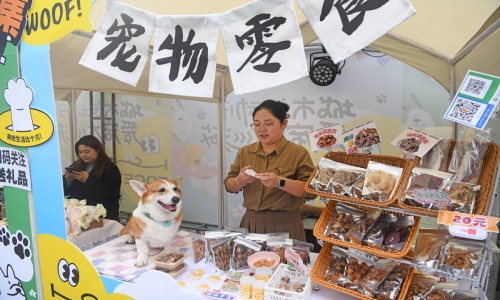Best Source for B2B Industry Trends, News and Updates

According to a report by the US Department of Agriculture, the total size of China’s pet industry reached US$41.9 billion (CNY302 billion) in 2024, a 7.5% increase from 2023. Pet food made up more than half of this market, with a 9.2% year-over-year growth. From 2013 to 2024, China’s pet food market saw a compound annual growth rate of 22.4%, far higher than the global average. However, market penetration is still low at just 20%, compared to over 90% in Europe and North America, showing plenty of room for future growth.
Pet owners in China are spending more on their animals. In 2024, average annual spending reached US$411 (CNY2,961) for dogs (up 3%) and US$281 (CNY2,020) for cats (up 4.9%). These increases reflect steady growth, though spending appears to be stabilizing.
China had 106 million pet owners in 2023. Most lived in large, medium, or small cities. Young people, especially those born after 1990, made up over 41% of pet owners. These younger generations are more likely to spend on premium pet products, including imported food and treats.
Cats are becoming more popular in China. In 2024, the country had 71.5 million cats and 52.6 million dogs. Busy urban lifestyles and small living spaces make cats easier to care for. Sales of cat food rose by 7.6% to US$9.8 billion, while dog food increased by 3.9% to US$10.3 billion.
Cat food consumption overtook dog food in 2022 and is still growing faster, especially in southern parts of China, where owning dogs is more difficult due to climate and housing restrictions.
Chinese pet owners are exploring more premium food options. In 2024, there was more interest in baked dry food, freeze-dried products, and fresh pet food. Dog owners prefer baked and wet foods, while cat owners are shifting toward baked and fresh foods, moving away from freeze-dried types.
More than 56% of pet-related spending went toward food over the last three years. Online platforms like Taobao/Tmall and JD.com dominate sales, but live-streaming platforms like TikTok are growing fast too.
China has 200 certified pet food factories producing over 1.12 million tons yearly, mostly in Hebei and Shandong provinces. Local brands are making big moves, especially in cat food and treats. In 2024:
47% of dog owners had no brand preference
27% preferred Chinese brands, and 18% preferred imports
48% of cat owners had no brand preference
28% preferred local brands, while 19% preferred imports
Although local products are rising in popularity, the US remains the largest exporter. US pet food exports to China totaled US$236.9 million in the first nine months of 2024, up 9% from 2023. Baked and freeze-dried products are in high demand due to their premium quality.
East China: Wealthy region with strong demand for high-end pet food
West China: Growing market with young, spending consumers
South China: More cats due to climate and urban housing
North China: Major production hub
Northeast China: Pet breeding center, supplies 70% of pets
China’s pet food market continues to grow fast, with rising interest in premium products and an expanding domestic industry. While US exporters still lead, success in China now depends on innovation, adaptability, and understanding local trends and preferences.
